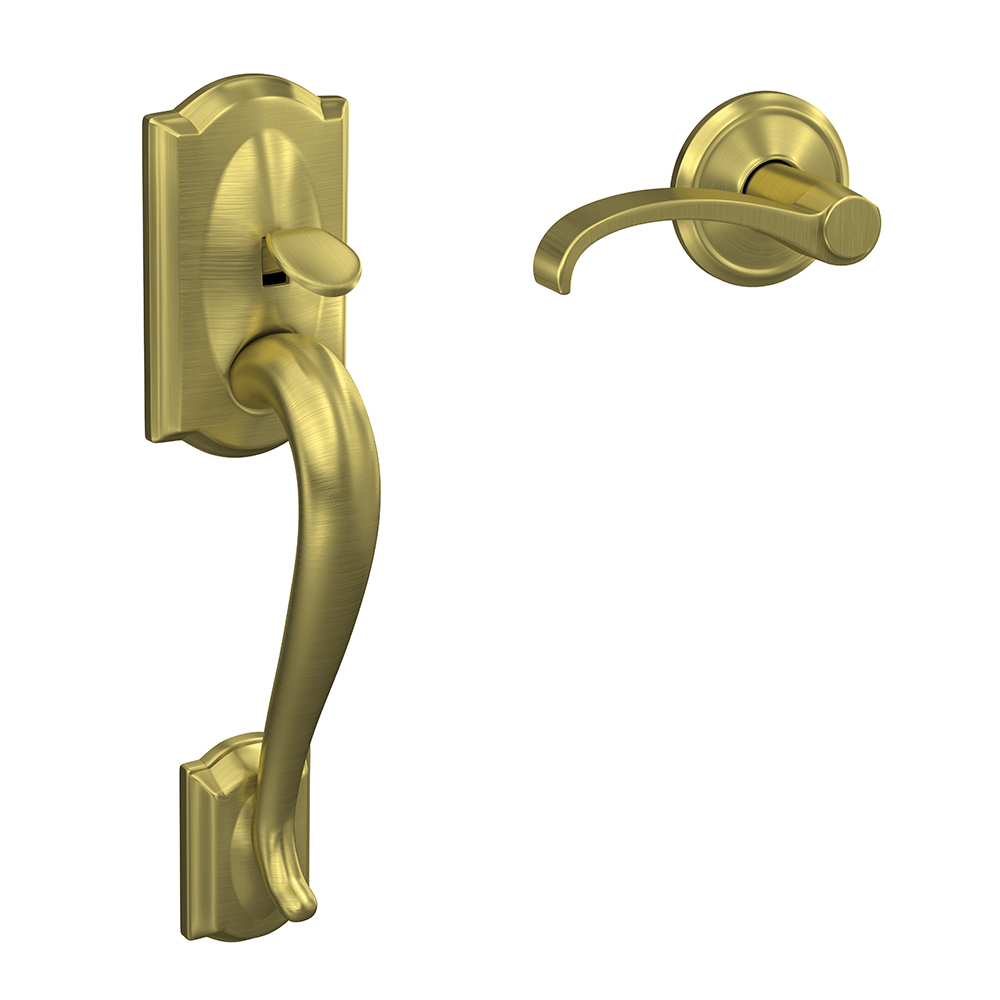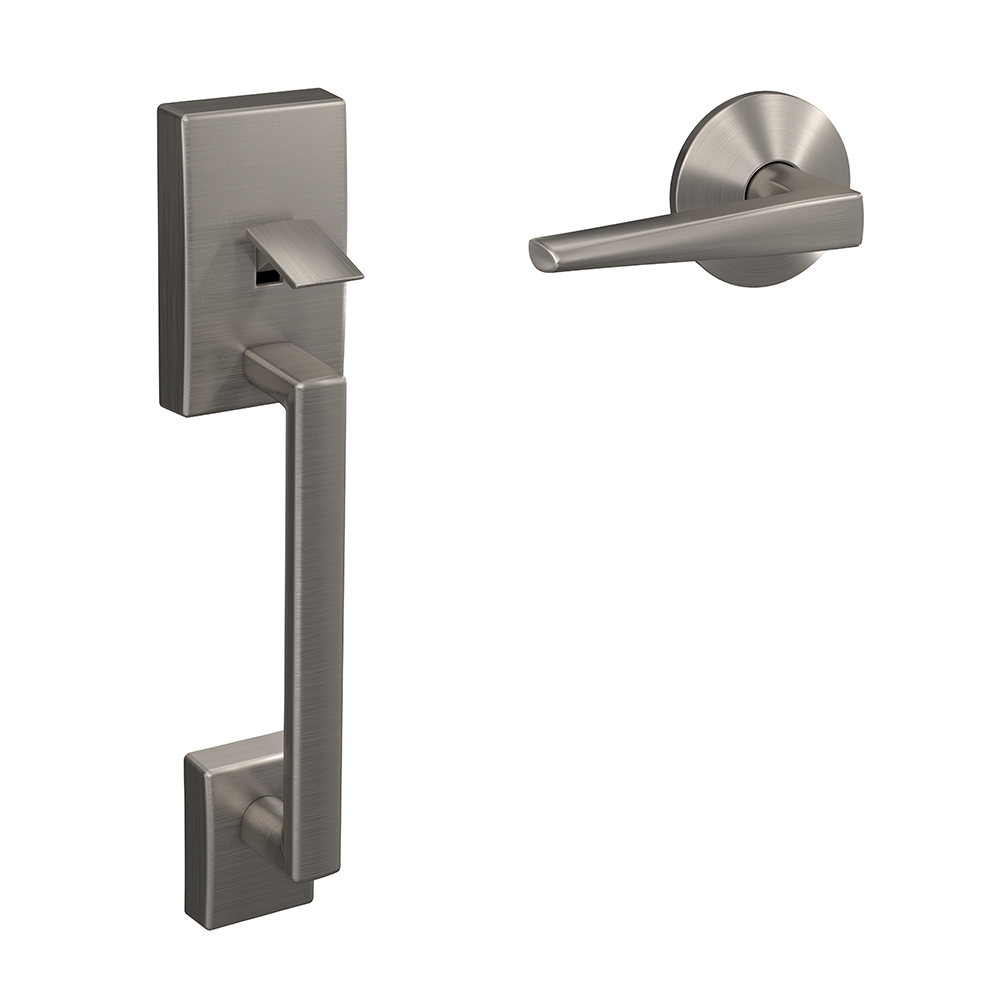Women who made waves in home engineering and architecture.
Monday, March 2, 2020
Engineer Lillian Gilbreth, landscape designer Ellen Shipman and architect Margaret Fielman accomplished more during their lifetimes than anyone else could have imagined of them.
In the movie The Imitation Game, Alan Turing tells Joan Clarke, the only woman working on solving the German Enigma code machine, “Sometimes it’s the very people who no one imagines anything of who do the things no one can imagine.”
Engineer Lillian Gilbreth, landscape designer Ellen Shipman and architect Margaret Fielman accomplished more during their lifetimes than anyone else could have imagined of them. As Schlage celebrates its 100th anniversary, and as we all recognize Women’s History Month, learn about some of the women who have changed the way we work and live forever.
Lillian Moller Gilbreth – Engineer (1878-1972)
No one expected Lillian Moller Gilbreth to become an engineer, not even Gilbreth herself. Initially discouraged by her father to pursue a higher education, Gilbreth persuaded him to let her have a shot. A few years later, she had bachelor’s and master’s degrees from the University of California, Berkeley … in English and literature.1
It wasn’t until meeting her husband, Frank, in 1904 that her career path irreversibly changed. Despite having already started a doctoral program in literature, Lillian Gilbreth began studying psychology. It would be the perfect field, her new husband reasoned, if she was going to help him with his consulting business. After several years and more than one rejection to have her papers published because she was a woman, she earned her Ph.D. in applied management from Brown University in 1915.
In the midst of these studies, Gilbreth gave birth to not one, two or three, but 12 children in less than 20 years. She also worked at her husband’s side helping other businesses to improve workplace efficiency and productivity. Through it all, often using the production efficiency strategies to run her own child-filled household, she eventually became known as a pioneer in organizational psychology.
When her husband died unexpectedly in 1924, she still had a large family to support, so she took over the Gilbreth and Company business. Many clients balked at taking advice from a woman, but Gilbreth pressed on and the business grew.
Gilbreth was a busy woman following her husband’s passing. During the Great Depression, President Herbert Hoover tapped her for assistance on the “Share the Work” program – she ultimately served as an advisor to at least five U.S. presidents – and consulted for the government during World War II, helping factories to transition for wartime production.
She also worked as an industrial engineer at General Electric, for which she helped design more efficient household appliances that saved American women time and energy. Among Gilbreth’s inventions? Refrigerator doors with shelves, egg keepers and butter trays, and the foot-pedal garbage can. She also filed patents for an improved electric can opener and wastewater hose for clothes washers, and designed kitchen layouts for easier use by disabled homemakers and veterans.
Prior to retiring, Gilbreth taught at a number of institutions, sometimes as a consultant for the family business. Her lecture positions included Purdue University, where she was the first woman to teach in the engineering school, Newark College of Engineering and the University of Wisconsin.
At the time of her death in 1972, at the age of 93, Gilbreth had earned at least 20 honorary degrees. She was also the first woman member of the American Society of Mechanical Engineers, in 1926. Forty years later, she was the first female recipient of the Hoover Medal of the American Society of Civil Engineers, recognizing her “unselfish application of energy and creative efforts in modifying industrial and home environments for the handicapped.”
Ellen Biddle Shipman – Landscape Designer (1869-1950)
Gardening had long been considered a gentlewoman’s hobby, but not until Ellen Biddle Shipman did a woman make a successful go of it as a business venture. With more than 600 gardens to her name at the time of her death in 1950, Shipman filled a need for some of America’s most elite and, at the same time, paved the way for women in landscaping.
Today we fully understand the appeal of planting for curb appeal, but the idea of a home garden for beauty was just taking off in the late 19th century. Shipman was able to take that burgeoning concept and turn it into a reality for her clients, particularly those wealthy enough to pay for their extensive maintenance. A male landscape architecture peers called her “one of the best, if not the very best, flower garden maker in America,” recognizing her for her use of color and texture.
Shipman’s unique quality drew the attention of architect Charles Platt. Working with Platt to serve the wives of the wealthiest families in the Northeast and Midwest, she became, according to the New York Times, “the darling of the garden club members and wives of industrialists who found in their homes and gardens the creative expression they were barred from in a world run by their husbands.” Together, Shipman and Platt combined elegant homes with equally sophisticated gardens designed for the retreat and privacy their clients craved.
When Shipman opened her own office in New York City, somewhere around 1920, she recruited the few women coming out of landscape architecture schools. Woman applicants to these schools, generally considered incapable of managing construction teams, were still required to take stenography classes. Their male counterparts, however, were not. Despite no formal training of her own – Shipman’s education seemed to come from living in picturesque Nevada, Arizona and New Hampshire – she still gave a much-needed lift to other women in the field.
Of all her elaborately designed gardens, only a few remain. Her landscapes eventually were considered too high maintenance for the changing times, but those that survive include the Windsor White garden in Chagrin Falls, Ohio, and the garden at Stan Hywet, the former estate of Goodyear tire magnate F.A. Seiberling, in Akron, which is now open to the public.
Margaret Feilman – Architect (1921-2013)
Australian architect Margaret Feilman raised towns from the rubble. But first, she had to clear her own obstacles on the way to becoming a town planner.
Ahead of the curve in secondary school, Feilman graduated a year early but was denied admission to the University of Western Australia for being too young. Having to delay further education, she joined the WA (Western Australia) Government’s Principal Architect in 1937, becoming its first and only female architect.
In a stroke of poor luck, Feilman entered the professional world in the lead-up to World War II. If a silver lining can be found, it was in the post-war opportunities for architects like Fielman. Towns bombed during the Second World War needed to be rebuilt, and Feilman had the skill. She began working for The Head Office of the Commonwealth Department of Works and Housing and was soon helping to reconstruct cities like Darwin and New Guinea in the late 1940s.
With that experience, Feilman was finally eligible for a British Council Scholarship to study town planning. The only woman studying town and country planning at the University of Durham, Fielman earned her post-graduate certificate with honors and returned to Australia in 1950. This experience ultimately paved the way for her most noted work.
A new port and industrial facility had been constructed on Cockburn Sound, south of Perth, and the workers, more than 25,000 of them, needed somewhere to live. Enter Fielman, who meticulously studied the environment, at one point convincing planners to move the proposed town of Kwinana based on wind direction so residents wouldn’t be affected by fumes from the facility. She studied the needs of the residents, designing the town’s layout so that community facilities were always within walking distance.
Fielman’s own love of the environment, fostered during childhood in southwest Australia, a region rich in nature reserves and state forests, caused her to design towns that kept residents close to nature. In the 1950s, she helped found the Tree Society, the first natural environment organization in Western Australia. Fielman was never far removed from her love of art or commitment to social causes, either. In addition to serving on boards of a number of charitable organizations, she created the Feilman Foundation, providing grants for environmental, youth-focused, cultural and educational issues.
According to the Australian National Trust, Fielman “was a trailblazer in her professional life and, coupled with her passion for the environment, the arts and making a difference in future generations, her contribution to Western Australia has been truly enormous.”
At the time of her death at age 92, Fielman held an honorary doctorate in architecture from the University of Western Australia. She’d also been named a Life Fellow by the Royal Australia Institute of Architects and a Paul Harris Fellow of Rotary International.
Find more notable moments in history and help us celebrate the 100th anniversary of Schlage at schlage.com/100. You can also read about more trailblazers we profiled during Black History Month in the Schlage blog archives.
1Lewis, Anna M. Women of Steel and Stone: 22 Inspirational Architects, Engineers, and Landscape Designers. Chicago Press Review, 2014.














